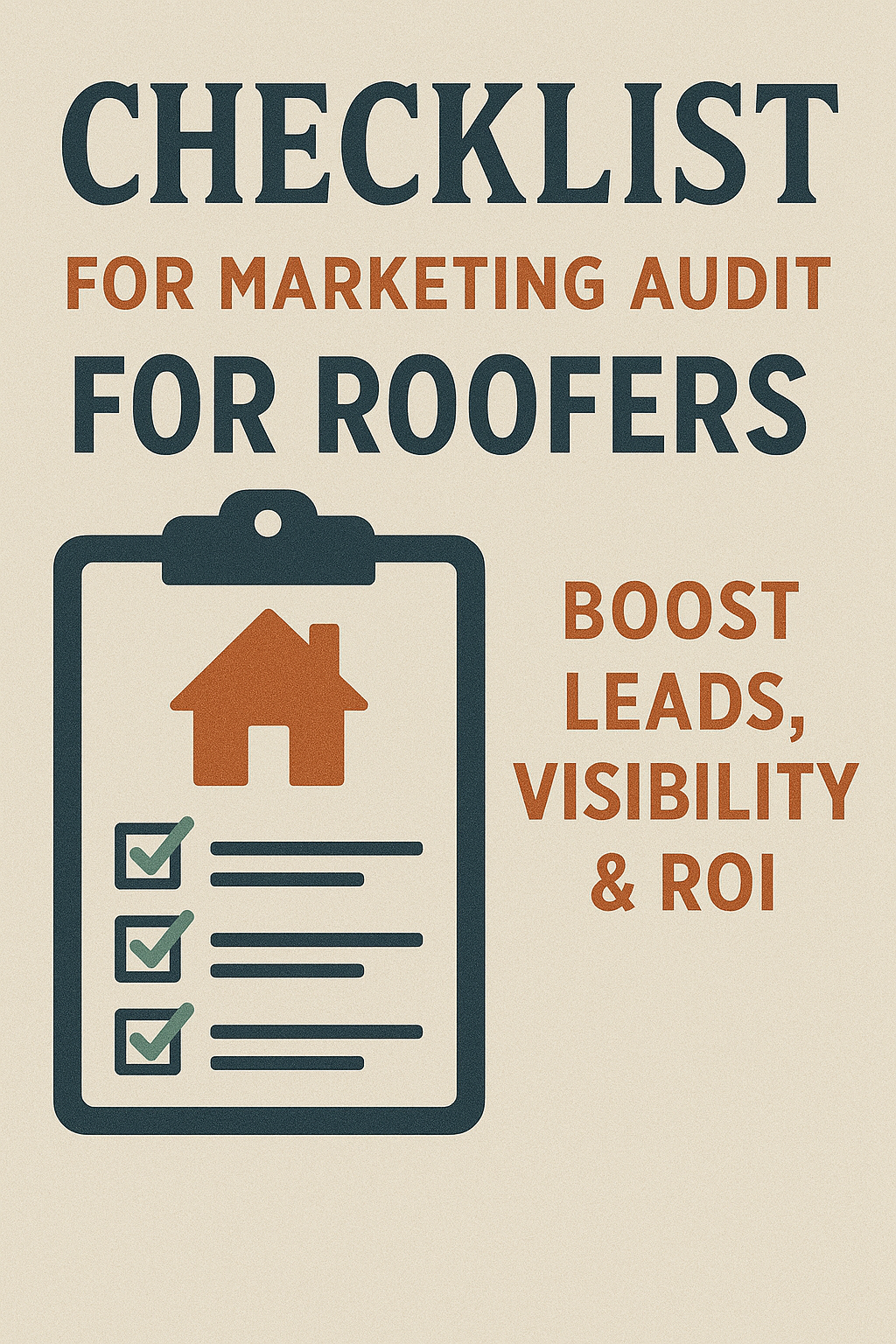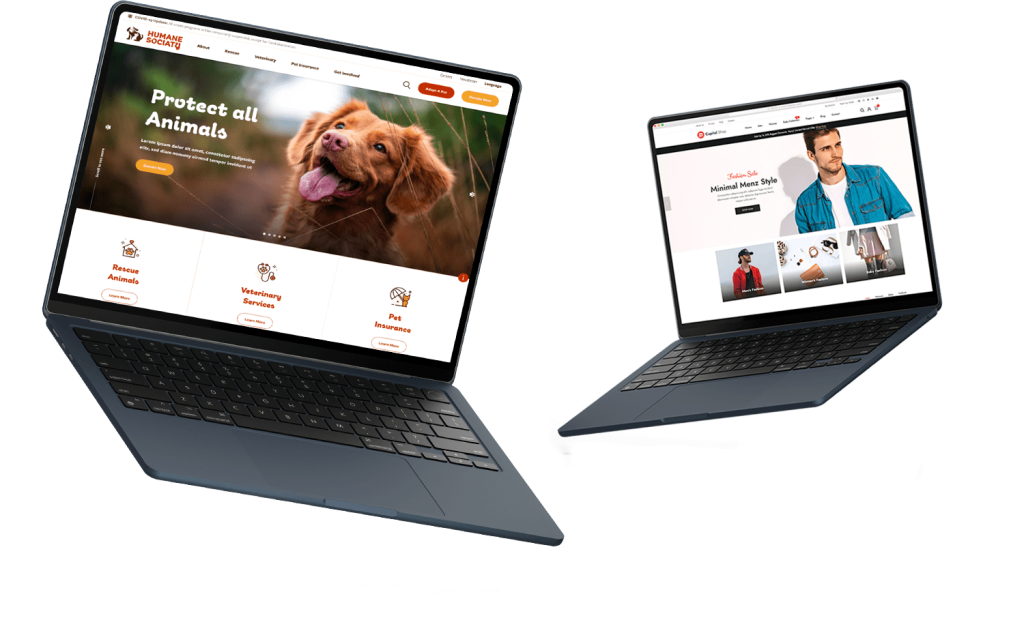In today’s saturated digital landscape, roofing companies must do more than just “show up online.” To grow leads, close more jobs, and gain local dominance, you need a strategic and measurable approach. That’s where a well-structured marketing audit comes into play.
Whether you’re working with a local SEO agency or managing marketing in-house, conducting a thorough audit will help identify gaps, enhance performance, and align your efforts with real business goals. This guide walks you through the essential checklist every roofer needs to evaluate marketing effectiveness—from SEO and content to advertising and conversion paths.
1. Define Your Marketing Goals
Before diving into audits, establish clear, measurable goals. Are you trying to generate more leads? Rank higher on Google? Improve your online reputation?
Your marketing audit will be most effective if it’s tied to specific KPIs such as:
- Website traffic growth
- Form submission volume
- Call tracking results
- ROI from ad campaigns
- Email open and click-through rates
2. Evaluate Your Branding and Online Reputation
Your brand is your promise to customers—and consistency is key. Roofing is a high-trust industry. That’s why a strong, visible, and reputable brand is essential for converting leads.
Audit checklist:
- Is your business name, address, and phone number (NAP) consistent across all platforms?
- Is your Google Business Profile fully optimized and active?
- Do you have recent and relevant reviews on Google, Facebook, Yelp, etc.?
- Are you answering to both positive and negative reviews?
ORM plays an important role in both customer conversion and SEO optimization services.
3. Conduct a Website & Technical SEO Audit
Your website is your 24/7 salesperson. It needs to be fast, user-friendly, and built to convert. A technical SEO audit ensures that search engines can crawl, index, and rank your site in the best possible manner.
Key technical areas to audit:
- Page load speed
- Mobile responsiveness
- Broken links and 404 errors
- Secure HTTPS protocol
- Proper XML sitemap and robots.txt
- Schema markup for services, reviews, and location
Tools like Google Search Console, SEMrush, and Screaming Frog can help identify technical issues that hurt rankings.
4. Review On-Page SEO Strategies
On-page optimization is where you control the keywords, structure, and relevance of your content. A strong on-page SEO strategy ensures your site speaks the language of users and search engines.
Audit questions to ask:
- Do your service pages include location-specific keywords (e.g., “roof repair in Dallas”)?
- Are title tags and meta descriptions convincing and keyword-rich?
- Are H1s, H2s, and image alt tags properly used?
- Is internal linking logical and helpful?
- Are blog posts updated and relevant?
Well-executed on-page SEO strategies increase visibility, improve user experience, and ultimately drive more qualified traffic.
5. Strengthen Off-Page SEO Solutions
While on-page SEO builds a solid foundation, off-page SEO solutions help you gain authority in Google’s eyes through backlinks, local citations, and brand mentions.
Key off-page audit items:
- Number and quality of inbound backlinks
- Presence in local directories (e.g., Angie’s List, HomeAdvisor)
- Guest posting or press features on reputable industry sites
- Social media sharing and engagement metrics
Use tools like Ahrefs or Moz to analyze your backlink profile and eliminate toxic links.
6. Analyze Content Marketing Effectiveness
Roofers who educate their customers with useful content build trust and stay top-of-mind. Blog articles, FAQs, and project showcases can attract and nurture leads when optimized well.
Content audit checklist:
- Do you publish consistent, valuable blog content?
- Are your posts targeting questions your customers are actually asking?
- Are you integrating keywords naturally (without stuffing)?
- Do your service pages clearly outline your offerings and benefits?
Great content also fuels your email, SEO, and social media strategies. It’s the engine that powers long-term growth.
7. Review Email Marketing Campaigns
Not all roofing leads are ready to convert immediately. That’s why email marketing campaigns are so effective—they nurture leads over time and drive repeat business.
Audit your email efforts by reviewing the following:
- Subscriber list segmentation
- Open rates and click-through rates
- Frequency and automation (e.g., welcome sequences, follow-ups)
- Relevance and value of email content
- Use of visuals, testimonials, and CTAs
Whether it’s a monthly newsletter or post-project follow-up, email keeps your brand top-of-mind and builds long-term customer loyalty.
8. Audit Paid Advertising & PPC Campaigns
Are your Google Ads and Facebook campaigns bringing in qualified roofing leads—or just eating up your budget?
Checklist for PPC audit:
- Are you targeting relevant keywords with commercial intent?
- Is your ad copy aligned with your landing page content?
- Are you using geo-targeting to focus on your service area?
- Are your landing pages optimized for conversions (CTAs, forms, etc.)?
- Are you using negative keywords to reduce wasted spend?
Properly audited and optimized ads can dramatically improve cost-per-lead and ROI.
9. Review Lead Tracking & CRM Systems
It’s not enough to drive traffic—you need to know where leads come from and how they convert. A CRM ensures that no opportunity falls through the cracks.
Audit points:
- Is your website properly integrated with your CRM?
- Are phone calls and form submissions tracked to their source?
- Can you identify which channels are driving high-value leads?
- Are follow-ups and pipeline stages clearly defined?
Lead tracking and attribution help roofing contractors make informed budgeting decisions.
10. Evaluate Social Media Presence
Social media might not be your #1 lead driver, but it’s essential for credibility and community engagement—especially for local roofers.
Audit your social media by asking:
- Are your profiles complete and branded consistently?
- How often are you posting?
- Are you using before/after photos, testimonials, and videos?
- Do you engage with comments and messages?
- Are your paid social ads performing?
Social proof matters. Homeowners want to see that you’re active, professional, and relatable.
11. Competitor Comparison
Finally, compare your performance to the top roofing contractors in your area. This gives you a sense of where you stand—and where you can gain ground.
Use competitive research tools to analyze:
- Keyword rankings
- Content strategies
- Ad copy and landing pages
- Social engagement levels
- Backlink profiles
A marketing audit isn’t complete without knowing how you stack up.
12. Work With the Right Partner
A DIY audit can go a long way—but having experts like SpeedDot360 in your corner takes things further. From professional technical SEO audits to custom email marketing campaigns, we help roofers uncover blind spots, fix inefficiencies, and scale with precision.
Whether you’re a startup contractor or an established roofing company, SpeedDot360 offers tailored solutions for lead generation, local visibility, and long-term growth.
Conclusion
A successful roofing business starts with a powerful marketing foundation. By following this marketing audit checklist, you’ll uncover actionable insights to boost traffic, conversions, and your bottom line.
Regular audits—ideally every 6 to 12 months—will keep your strategy fresh, focused, and ahead of the competition. Don’t just spend money on marketing. Make sure every dollar is working as hard as you do on the roof.
Ready to unlock the full potential of your roofing marketing?
Contact SpeedDot360 today for a free consultation and start building a smarter, results-driven marketing strategy.





